Electric motors are devices that turn electrical energy into usable mechanical energy. They achieve this by harnessing the mechanical force, or energy, produced during the interaction of an electrical current and a magnetic field. This electrical energy comes from alternating current (AC) or direct current (AC) charges from a power grid or battery. Read More…
AutomationDirect.com specializes in providing a wide range of electric motors to meet our customers' diverse needs. Our commitment to excellence drives us to offer top-quality products that deliver superior performance and reliability. With our extensive selection of electric motors, ranging from AC motors to DC motors and everything in between, we empower industries to optimize their operations...
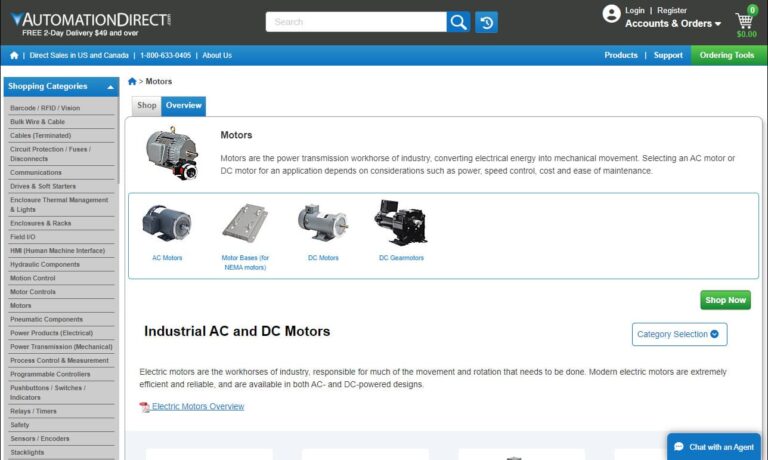
Since our inception in 1932, Carter Motor manufactures AC universal motors, small motors, DC universal motors, DC permanent magnet motors, DC shunt wound motors and gearmotors, and many others. All of our products are designed and assembled here in the USA. Our team is here to help you determine the best motor to fit your application and to ensure the process is efficient and stress-free. We are...
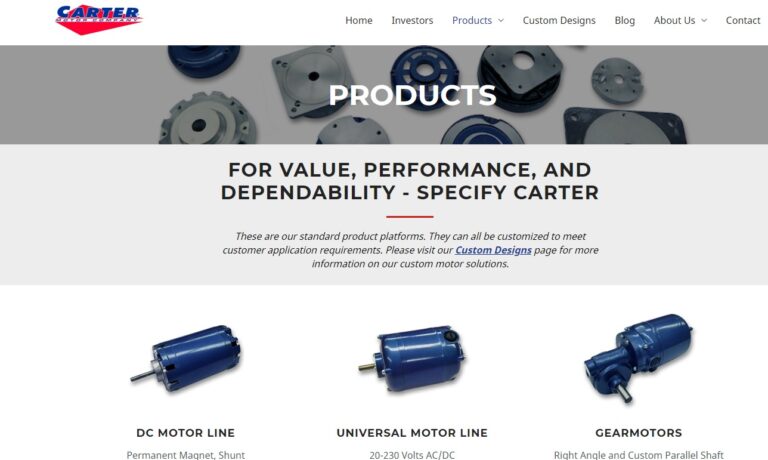
The products of Composite Motors, Inc. all undergo the same AS9100 certified design, manufacture and testing protocol. These products include Brushless DC motors, motor drivers, Lithium Ion batteries and Battery Management Systems, gear motors and linear actuators. All products are made in the USA from raw materials. Visit our website to learn more and to view our newest products.
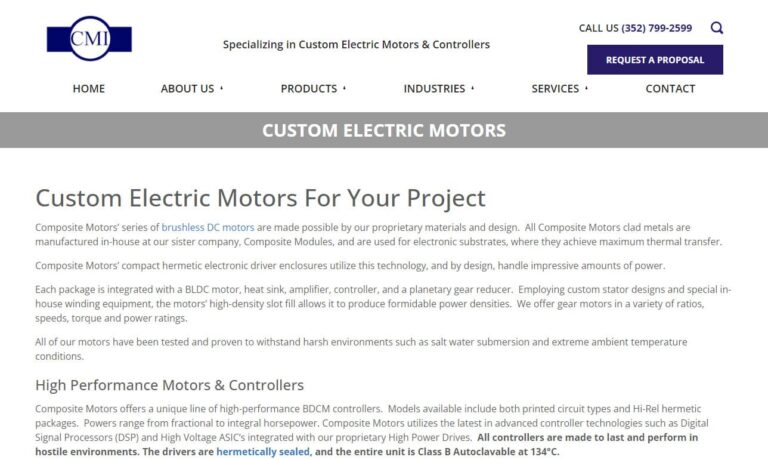
We manufacture motors, motion control and rotating products for OEMs. The electric motors obtainable through us include AC motors, AC/DC motors, brushless DC motors, stepper motors.
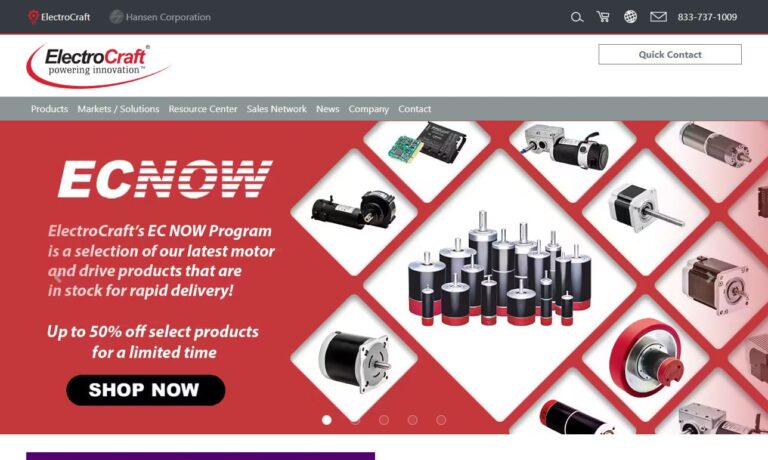
Glentek, Inc. is a trusted provider of high-performance electric motors, specializing in innovative motion control solutions for a wide range of industries. We design and manufacture precision servo motors and amplifiers, delivering powerful and efficient performance for demanding applications. Our engineering expertise allows us to develop both standard and custom solutions, ensuring that each...

A leading supplier of high-performance motors and components, Chiaphua Components North America serves customers throughout the Americas and offers electric motors through the CCL & CIM Motor Products division. We supply motor solutions such as brushless motors, permanent magnet DC motors, induction motors, shaded pole motors, universal motors, vacuum cleaner motor, & gear motors.

More Electric Motor Manufacturers
Electric motors are foundational components in modern technology, transforming electrical energy into mechanical energy for countless applications. By leveraging the interaction between electric currents and magnetic fields, electric motors create mechanical force that powers everything from industrial machines to everyday household appliances. Whether the energy source is alternating current (AC) from the power grid or direct current (DC) from batteries, electric motors are essential to a wide spectrum of industries and use cases.
Electric Motor Applications
AC and DC electric motors serve a universal purpose: providing the driving force behind a broad range of machinery and equipment. Their versatility enables them to energize applications from massive industrial equipment and commercial HVAC systems to small consumer electronics and precision medical devices.
- Industrial Manufacturing: Electric motors are the backbone of automation, robotics, conveyor systems, and material handling equipment. They ensure high efficiency and reliability in assembly lines, packaging, and heavy-duty processing.
- Automotive and Transportation: Motors are found in electric vehicles (EVs), hybrid vehicles, trains, and even aircraft—delivering propulsion, actuating windows, wipers, and seat adjustments. High-efficiency motors are central to EV range and performance.
- Home and Office Equipment: From refrigerator compressors and washing machine drums to computer cooling fans and printers, electric motors are integral to major appliances and electronics.
- Construction and Power Tools: Drills, saws, grinders, and compressors rely on robust motors for consistent performance and safety on job sites.
- HVAC and Climate Control: Fans, blowers, air conditioners, and pumps use motors to regulate airflow, heating, and cooling in residential, commercial, and industrial environments.
- Medical Devices: Motors drive precision equipment like infusion pumps, ventilators, and surgical robots, where accuracy, reliability, and compact size are critical.
- Consumer Electronics: Small brushless motors are vital in devices such as smartphones, cameras, and smartwatches, ensuring seamless operation with minimal noise and energy consumption.
Did you know? The largest electric motors are used for high-demand applications such as pipeline compression and ship propulsion, while the smallest are compact enough to fit inside electric watches.
Looking for motors for a specific application? Explore:
- What type of electric motor is best for HVAC systems?
- How do I choose a motor for industrial automation?
- Which electric motors are optimal for electric vehicles?
The operation of all electric motors is rooted in the interplay between magnetic fields and electric currents. Motors are generally categorized as AC motors, which operate on alternating current, and DC motors, which utilize direct current. Specialized motors, such as brushless DC motors and stepper motors, further expand the range of applications, offering solutions for precision control, variable speed, and high efficiency.
History of Electric Motors
The evolution of electric motors spans nearly three centuries, reflecting persistent innovation and discovery. The journey began in the 1740s, when Scottish monk Andrew Gordon developed the first electrostatic device. In 1820, French physicist André-Marie Ampère formulated Ampère’s Force Law, describing how mechanical force arises from the interaction of current-carrying wires—a principle that remains at the core of motor technology.
A year later, Michael Faraday’s experiments demonstrated the rotational effects of electric currents and magnetic fields. By immersing a wire in mercury near a magnet, Faraday observed continuous rotation, confirming the existence of a circular magnetic field generated by electric current. Peter Barlow’s subsequent experiments with the Barlow wheel further validated these findings.
These foundational discoveries paved the way for practical electric motors. In 1827, Ányos Jedlik built the first recognizable motor with a rotor, stator, and commutator—introducing key motor components still used today. The 1830s witnessed breakthroughs such as William Sturgeon’s DC motor and Thomas Davenport’s battery-powered motor, which led to early applications in printing and machine tools.
The mid-to-late 19th century saw electric motors transition from laboratory curiosities to commercial products. Moritz von Jacobi’s rotating motor propelled a boat across a river, and Zénobe Gramme’s design became the first commercially successful DC motor. The pivotal moment for AC motors arrived in 1887 when Nikola Tesla invented the induction motor, eliminating the need for commutators and sparking a revolution in industrial power transmission.
Frank J. Sprague’s innovations produced reliable, non-sparking DC motors and electric trolleys, marking the start of widespread electrified public transportation. His work also led to the invention of the electric elevator and the design of urban transit systems like Chicago’s “L.”
Throughout the 20th century, electric motors were instrumental in driving the industrial revolution, automating factories, improving productivity, and increasing standards of living. Today, continuous advancements in materials, electronics, and control systems have made electric motors more efficient, compact, and adaptable—powering the technology that shapes our daily lives.
Electric Motor Design
When selecting or designing an electric motor, manufacturers and engineers consider several factors to ensure optimal performance, reliability, and efficiency. The right electric motor solution is tailored to the user’s application requirements, which may vary widely across industries and use cases.
- Performance Requirements: Desired speed (RPM), torque output, load size and placement, and expected duty cycle (continuous, intermittent, or variable).
- Power Source: Whether the application requires AC or DC power, and the available voltage or frequency.
- Environmental Factors: Operating temperature, humidity, exposure to dust, chemicals, or moisture, and installation constraints (such as size or weight limits).
- Control Needs: Fixed speed vs. variable speed, precision control, and integration with sensors or feedback systems.
- Efficiency and Compliance: Energy efficiency ratings (such as those outlined by NEMA or IEC), compliance with safety and environmental standards.
Manufacturers can customize electric motors by altering the number of rotors, stator pole configuration, winding types, enclosure ratings, and materials. For specialized applications, discussing your specific requirements with experienced suppliers ensures you receive a motor that meets or exceeds your technical and operational needs.
Want a custom solution?
- How do I specify the right motor for my unique application?
- What customization options are available for industrial motors?
- Can I improve energy efficiency with the right motor design?
Electric Motor Features
Understanding the core components and configurations of electric motors is essential for selecting the best model for your application. Each part plays a unique role in motor functionality, longevity, and performance.
Components
- Rotor: The moving component that generates mechanical output through its rotation. Rotors may contain built-in conductors or permanent magnets, depending on the motor design.
- Stator: The stationary part of the electromagnetic circuit, housing windings or permanent magnets, and constructed from laminated metal sheets to reduce energy losses.
- Windings: Coiled wires wrapped around a core, producing magnetic poles when energized with current.
- Air Gap: The small but crucial space between the rotor and stator. It impacts efficiency, power factor, and noise—smaller air gaps generally yield better performance.
- Commutator: Primarily present in DC and universal motors, the commutator periodically reverses current direction, enabling efficient rotation and torque production.
Configurations
- Salient Pole: Features protruding poles on the rotor, ideal for synchronous motors and applications demanding high torque and precise control.
- Non-Salient Pole: Features a smooth rotor surface, typical in induction motors. Known for easier manufacturing, cost-effectiveness, and reliability in general industrial and commercial tasks.
- Shaded Pole: Utilizes shading coils to create a rotating magnetic field. Common in small appliances like fans and blowers, valued for their simplicity and affordability, though less efficient for heavy-duty applications.
Selecting the right configuration is crucial for achieving the desired balance between performance, cost, durability, and control.
Electric Motor Types
Electric motors can be classified in several ways, each suited to specific power sources, internal constructions, motion types, and energy conversion methods. Understanding these distinctions helps users and engineers make informed decisions and optimize system performance.
Types by Current Source
- AC Motors: Operate using alternating current from sources like inverters, generators, or the power grid. Widely used in industrial, HVAC, and household applications due to their efficiency and scalability.
- DC Motors: Utilize direct current, often from batteries, rectifiers, or dedicated DC power supplies. Preferred for applications requiring variable speed control, such as electric vehicles and robotics.
- Universal Motors: Capable of running on either AC or DC, making them versatile for portable power tools and domestic appliances.
Types by Internal Construction
- Brushed Motors: Rely on brushes and a commutator to transfer current. Types include separately-excited, series-wound, shunt-wound, compound-wound, and permanent magnet DC motors. Common in automotive starters, industrial equipment, and toys.
- Brushless Motors: Use electronic controllers and Hall effect sensors instead of physical brushes, resulting in higher efficiency, less maintenance, and longer lifespan. Essential in drones, medical devices, and advanced manufacturing systems. Learn more about brushless motors.
- Gear Motors: Integrate gear heads to adjust output speed and torque, often used in conveyor belts, actuators, and precision machinery.
- Electric Hub Motors: Embedded in the hub of wheels, delivering direct drive for e-bikes, electric scooters, and certain automotive applications.
Types by Means of Motion
- Three-Phase Motors: Known for high efficiency and smooth operation, common in heavy-duty industrial uses like pumps, compressors, and large fans. Discover 3-phase motors.
- Single-Phase Motors: Suited for residential and light commercial applications, powering appliances, HVAC units, and small equipment.
- Linear Motors: Produce motion in a straight line, ideal for conveyor systems, actuators, and high-precision automation.
- Stepper Motors: Move in discrete steps, providing precise control for 3D printers, CNC machines, and robotic arms.
- 12V Motors: Compact and efficient, widely used in automotive accessories, portable devices, and low-voltage applications. Find 12V motor solutions.
Types by Energy Conversion Method
- Synchronous Motors: Maintain a constant speed regardless of load changes, ideal for precision timing, clocks, and high-accuracy industrial processes.
- Induction Motors: Operate on electromagnetic induction, prized for durability and cost-effectiveness. These asynchronous motors are found in applications ranging from fans and blowers to heavy machinery.
- Electrostatic Motors: Use electrostatic forces for motion; while less common, they’re valuable in specialized micro-mechanical systems (MEMS).
- Servo Motors: Employ integrated feedback devices for precise position and speed control, essential in robotics, automated manufacturing, and aerospace applications.
Need help choosing a motor?
- Which electric motor type is best for precision robotics?
- How do brushless motors compare to brushed motors in efficiency and maintenance?
- What are the advantages of servo motors in automation?
Accessories
Selecting the right accessories for your electric motor can significantly enhance performance, longevity, and safety. The most common electric motor accessories include:
- Phase Converters: Enable three-phase motors to operate on single-phase power supplies, broadening installation options for industrial and commercial users.
- Bearings: Support the rotating shaft, reducing friction and wear for smoother operation and longer service life.
- Fan Covers: Protect the cooling fan from dust, debris, and accidental contact, maintaining optimal temperature control.
- Motor Kits/Mounting Kits: Include hardware and components required for secure installation and assembly, ensuring stability and alignment.
- Rain Shields: Defend outdoor motors against moisture, rain, and environmental hazards, preserving electrical integrity and minimizing corrosion.
- Brake Kits: Allow for quick stopping or holding the motor in a fixed position, critical for material handling and automated safety systems.
- Remote Controls: Enable convenient operation from a distance, ideal for hard-to-access installations or integrated control systems.
- Speed and Voltage Controllers: Offer precise regulation over motor speed, torque, and performance, vital for dynamic or variable-load applications.
- Conduit Boxes: Organize and protect electrical connections, reducing risk of short circuits or moisture ingress.
The necessity and selection of motor accessories depend on your specific application, environmental conditions, and desired control features. For high-performance or mission-critical operations, proper accessory integration can make the difference between consistent uptime and unexpected failures.
Explore further:
- Which accessories are essential for outdoor motor installations?
- How can I improve motor reliability with the right accessories?
- What are the best practices for motor installation and maintenance?
Electric Motor Standards
To ensure safety, performance, and efficiency, electric motor manufacturers adhere to rigorous industry standards. In the United States, the National Electrical Manufacturers Association (NEMA) sets the primary benchmarks, covering everything from design and materials to testing, installation, and energy efficiency.
- NEMA MG 1: Specifies general motor requirements, including construction, performance, and enclosure types.
- NEMA MG 10: Guides on energy efficiency, helping users select motors that reduce power consumption and operational costs.
- NEMA MG 11: Covers application, installation, and maintenance best practices, ensuring motors are deployed safely and effectively.
Adhering to these standards guarantees:
- Uniformity and compatibility across the industry
- Reliable and safe operation for end-users
- Standardized testing for fair performance comparisons
- Enhanced energy efficiency and reduced operating expenses
- Facilitated international trade and regulatory compliance
Non-compliance can result in unsafe products, increased risk of fire or malfunction, higher energy bills, and damage to reputation or legal standing. For buyers and specifiers, always confirm that the electric motor and related products meet the relevant NEMA, IEC, or other recognized industry standards.
Questions to ask:
- Is this electric motor NEMA or IEC certified?
- What are the energy efficiency ratings?
- Are there compliance documents available for review?
Common Causes of Electric Motor Failure & How to Protect Against It
Understanding the primary causes of electric motor failure is vital for maximizing uptime and minimizing costly downtime. Here are the most common reasons motors fail and actionable strategies for protection.
Causes
- Electrical Overload: Excessive current in motor windings—often due to low voltage supply, short circuits, or overvoltage—can lead to overheating and insulation breakdown.
- Overheating: Accounts for over half of insulation failures. Poor ventilation, high ambient temperatures, or overloading are frequent culprits.
- Low Resistance: Caused by insulation breakdown from corrosion, overheating, or physical damage. Leads to short circuits and reduced lifespan.
- Operational Overload: When motors are pushed beyond their rated load, they experience insufficient torque, excessive heating, and accelerated wear on components.
Electric Motor Protection
- Overload Protection: Automatically disconnects power when excessive load is detected, preventing dangerous overheating.
- Low Voltage Protection: Shuts down the motor if supply voltage drops below safe levels, restoring operation once normal voltage resumes.
- Overcurrent Protection: Uses circuit breakers and fuses to cut power when current exceeds safe thresholds, guarding against electrical damage.
- Phase Failure Protection: Particularly important in three-phase systems, this feature disconnects the motor if any phase is lost, preventing imbalance and mechanical stress.
For optimal reliability, combine these protection mechanisms with regular maintenance, proper installation, and adherence to load specifications. Consider predictive maintenance tools and condition monitoring systems for mission-critical applications.
Looking to prevent failures?
- How can I detect early signs of electric motor failure?
- What maintenance schedule is recommended for industrial motors?
- Are there smart monitoring solutions for predictive maintenance?
Things to Consider About Electric Motors
Choosing the right electric motor involves more than just technical specifications. A comprehensive evaluation will save time, reduce costs, and ensure long-term satisfaction. Here’s a step-by-step guide to selecting the ideal motor for your application:
- Define Your Requirements: Clearly outline your intended application, required performance (speed, torque), voltage and power needs, environmental conditions, and control features (fixed or variable speed).
- Set Your Budget: Factor in both upfront costs and long-term operational expenses, including energy efficiency, expected maintenance, and accessory requirements.
- Delivery and Support: Consider lead times, installation assistance, technical support, and after-sales service options.
- Compliance and Quality: Verify that your shortlisted motors meet relevant industry standards (NEMA, IEC) and efficiency ratings.
- Supplier Reputation: Review manufacturer profiles, customer testimonials, and case studies. Request references or sample projects if possible.
To streamline your search, explore the reputable electric motor manufacturers listed on this page. Compare their offerings, evaluate their experience in your industry, and discuss your application needs directly with their technical teams. Narrow your selection to three or four top candidates and request detailed quotes, including customization options and support services.
Ready to get started?
- What questions should I ask electric motor manufacturers?
- Can I request a sample or demo unit?
- How do I compare energy efficiency ratings between models?
By following these steps and leveraging the expertise of leading suppliers, you’ll be well-positioned to select an electric motor that delivers superior performance, reliability, and value. Good luck!
Related Resources:
- AC Motor Selection Guide
- DC Motor Buying Tips
- Advantages of Brushless Motors
- Three-Phase Motor Applications
- 12V Motor Use Cases
For more information or to connect with top electric motor suppliers, visit our comprehensive manufacturer directory.
What are the main applications of electric motors?
Electric motors are used across a wide range of industries and devices, including industrial manufacturing (automation, robotics, conveyor systems), automotive and transportation (electric vehicles, trains, aircraft), home and office equipment (appliances, electronics), construction tools (drills, saws), HVAC systems, medical devices, and consumer electronics.
How do I choose the right electric motor for my application?
To choose the right electric motor, consider your performance requirements (speed, torque, duty cycle), power source (AC or DC, voltage), environmental factors (temperature, moisture), control needs (fixed or variable speed), efficiency standards, and compliance requirements. Consulting with experienced manufacturers can help you find a custom solution for your specific application.
What are the most common types of electric motors?
Common electric motor types include AC motors, DC motors, universal motors, brushed motors, brushless motors, gear motors, electric hub motors, three-phase motors, single-phase motors, linear motors, stepper motors, synchronous motors, induction motors, electrostatic motors, and servo motors.
What are the main causes of electric motor failure and how can I prevent them?
The main causes of electric motor failure are electrical overload, overheating, low resistance due to insulation breakdown, and operational overload. Preventive strategies include using overload, low voltage, overcurrent, and phase failure protection devices, as well as regular maintenance and monitoring.
Which accessories can enhance the performance and reliability of electric motors?
Important electric motor accessories include phase converters, bearings, fan covers, mounting kits, rain shields, brake kits, remote controls, speed and voltage controllers, and conduit boxes. The right accessories can improve performance, safety, installation, and longevity, especially in challenging environments.
What industry standards should electric motors comply with?
Electric motors should comply with standards set by organizations such as the National Electrical Manufacturers Association (NEMA) in the United States, including NEMA MG 1 for general requirements, NEMA MG 10 for energy efficiency, and NEMA MG 11 for installation and maintenance. Compliance ensures safety, performance, efficiency, and compatibility across applications.
What are the key components of an electric motor?
The main components of an electric motor are the rotor (moving part that outputs mechanical energy), stator (stationary part with windings or magnets), windings (coiled wires that generate magnetic poles), air gap (space between rotor and stator), and commutator (in DC/universal motors, reverses current direction). Different configurations suit different applications and performance goals.


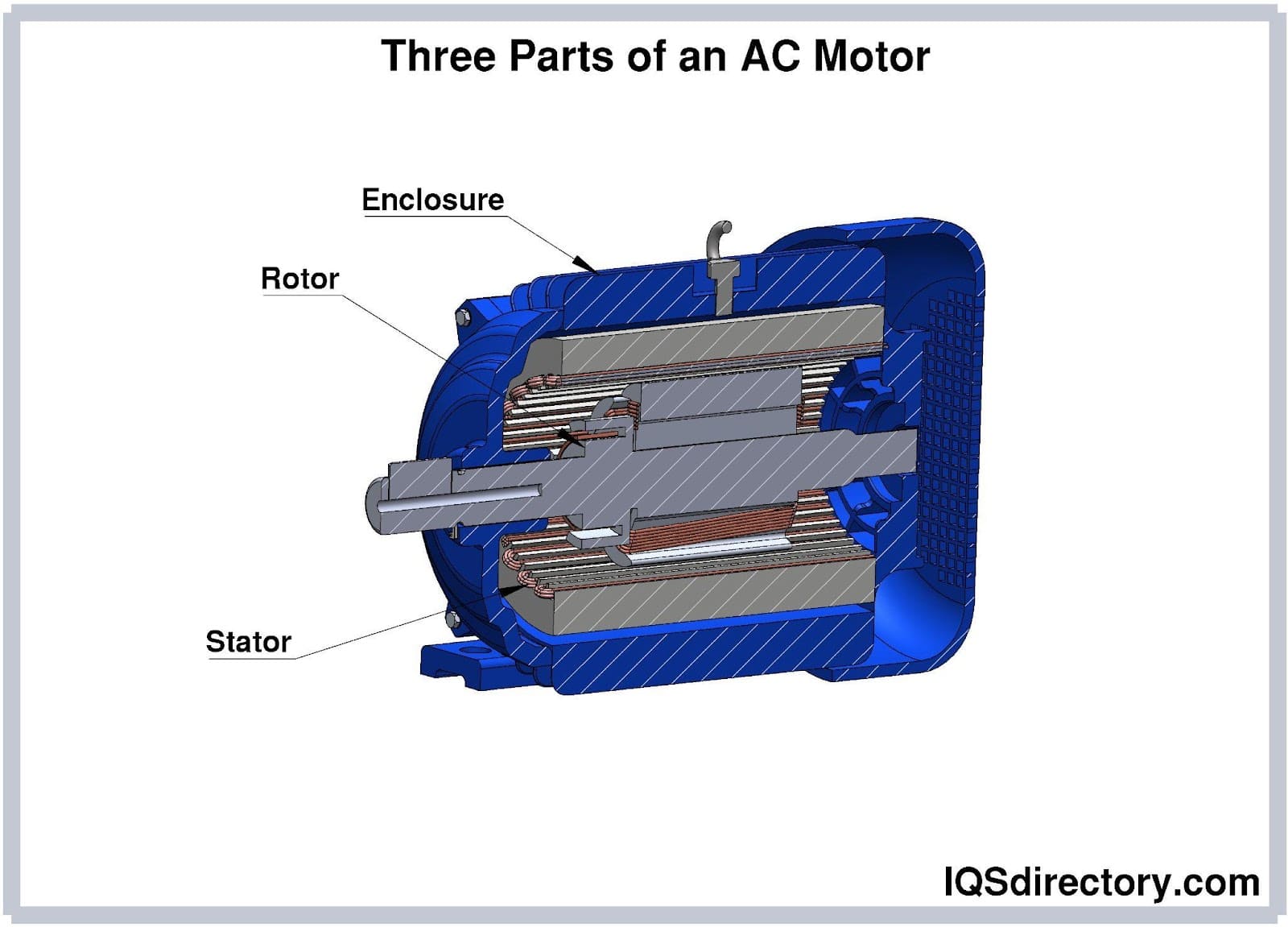
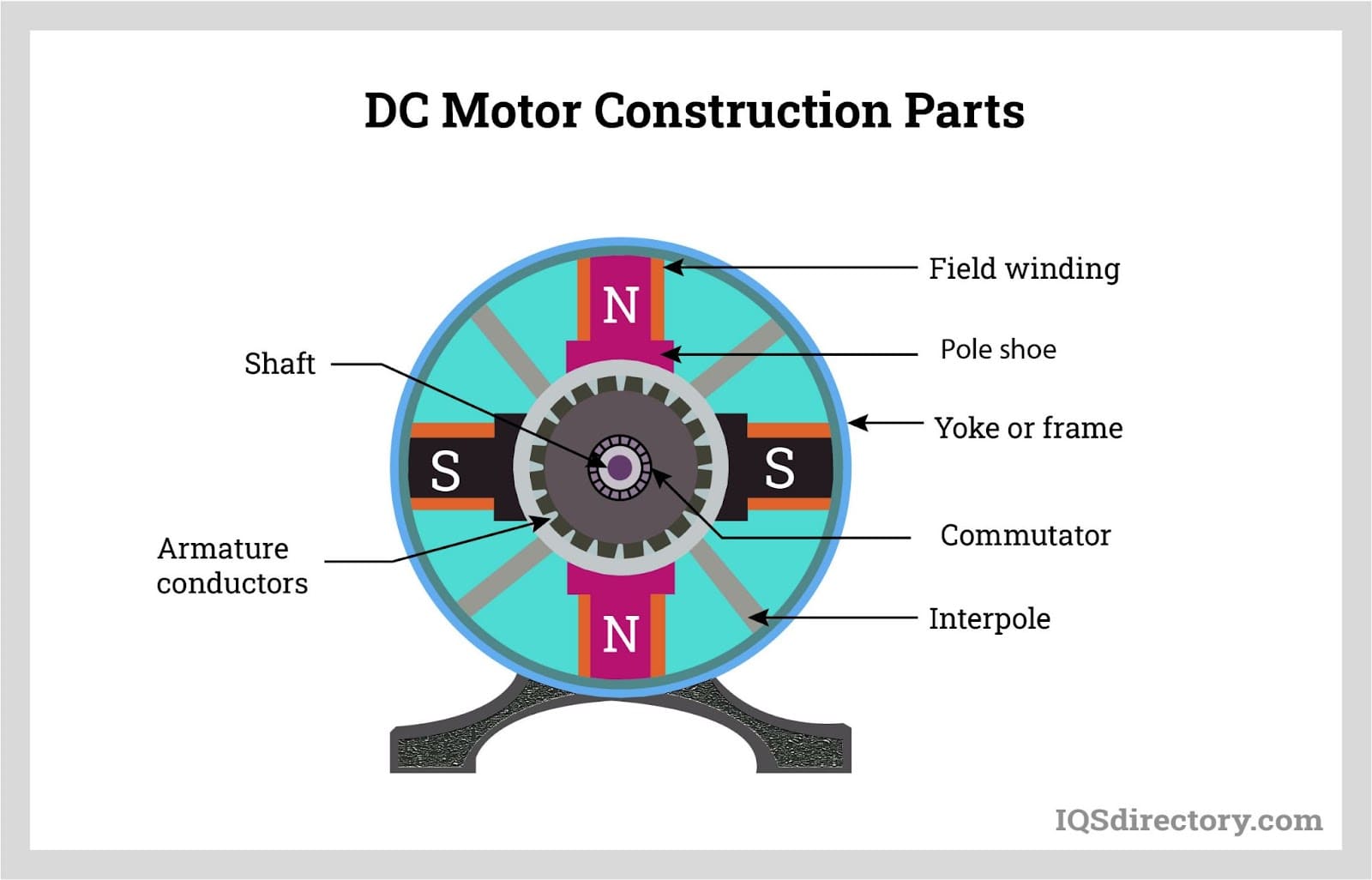

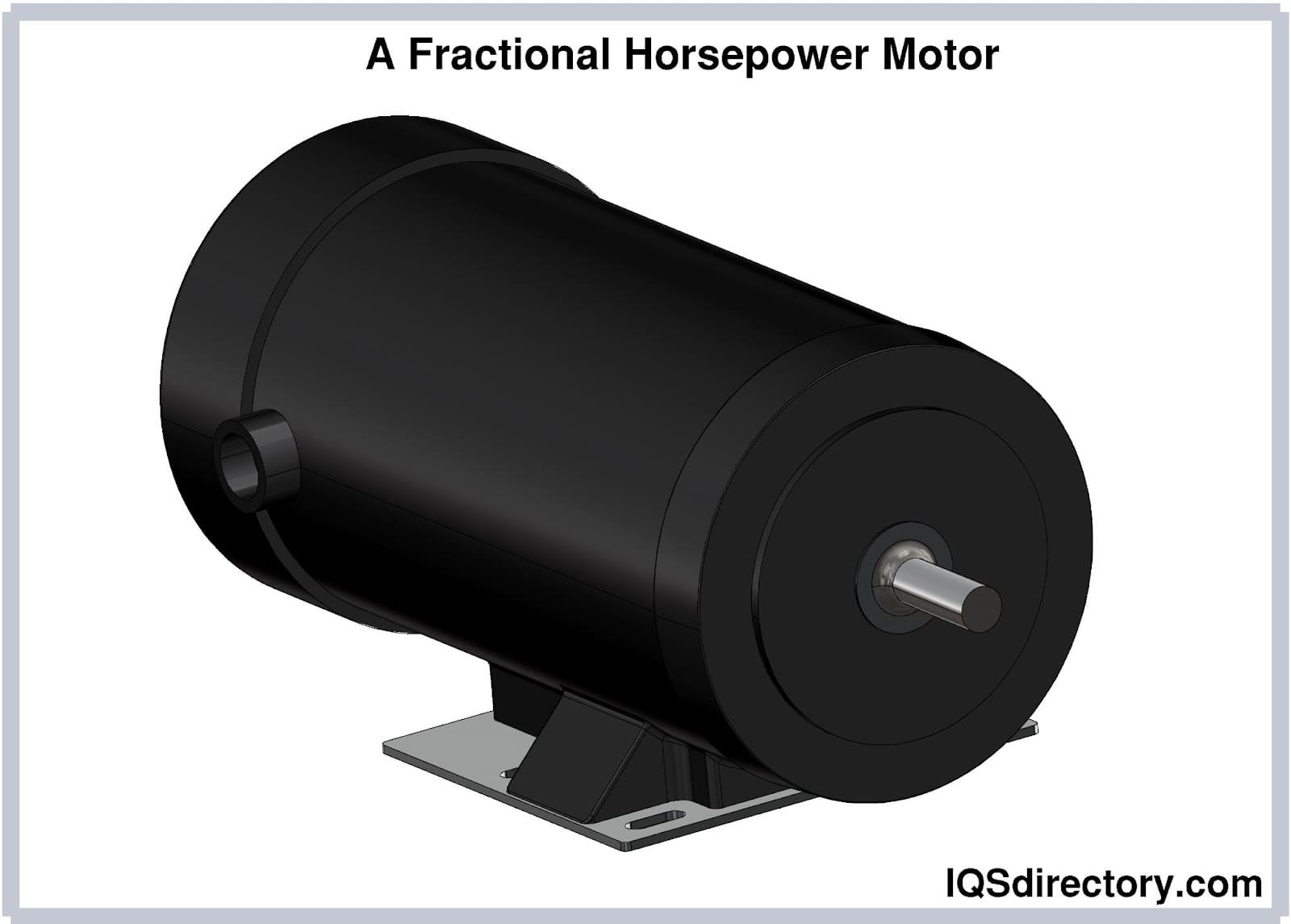
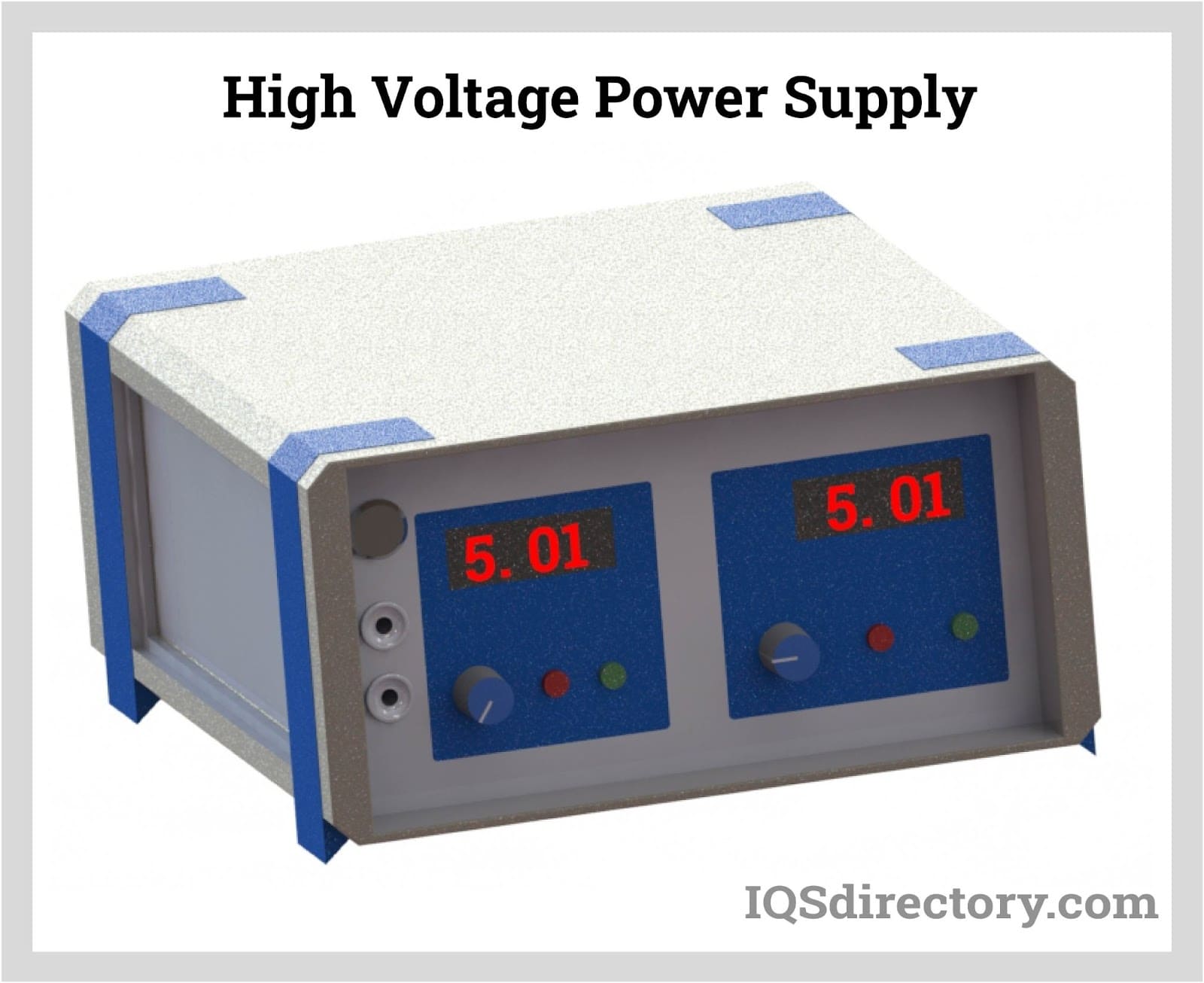

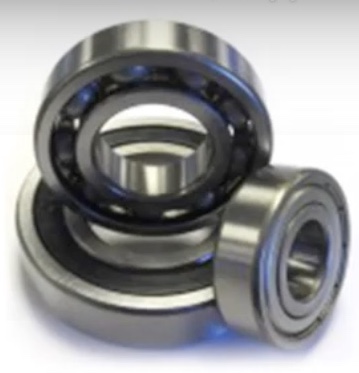 Ball Bearings
Ball Bearings Ball Screws
Ball Screws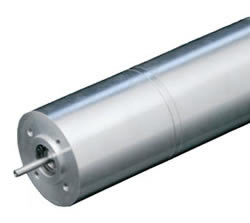 Electric Motors
Electric Motors Friction Materials
Friction Materials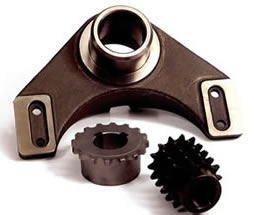 Gears
Gears Quick Release Couplings
Quick Release Couplings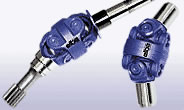 Shaft Couplings
Shaft Couplings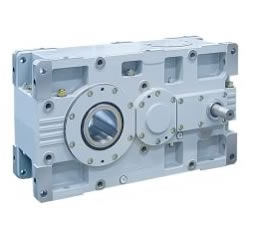 Speed Reducers
Speed Reducers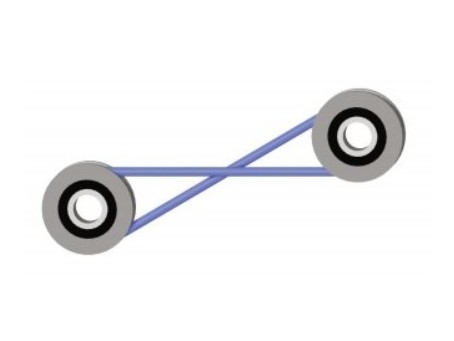 Timing Belting
Timing Belting Castings & Forgings
Castings & Forgings Bulk Material Handling
Bulk Material Handling Electrical & Electronic Components
Electrical & Electronic Components Flow Instrumentation
Flow Instrumentation Hardware
Hardware Material Handling Equipment
Material Handling Equipment Metal Cutting Services
Metal Cutting Services Metal Forming Services
Metal Forming Services Metal Suppliers
Metal Suppliers Motion Control Products
Motion Control Products Plant & Facility Equipment
Plant & Facility Equipment Plant & Facility Supplies
Plant & Facility Supplies Plastic Molding Processes
Plastic Molding Processes Pumps & Valves
Pumps & Valves Recycling Equipment
Recycling Equipment Rubber Products & Services
Rubber Products & Services